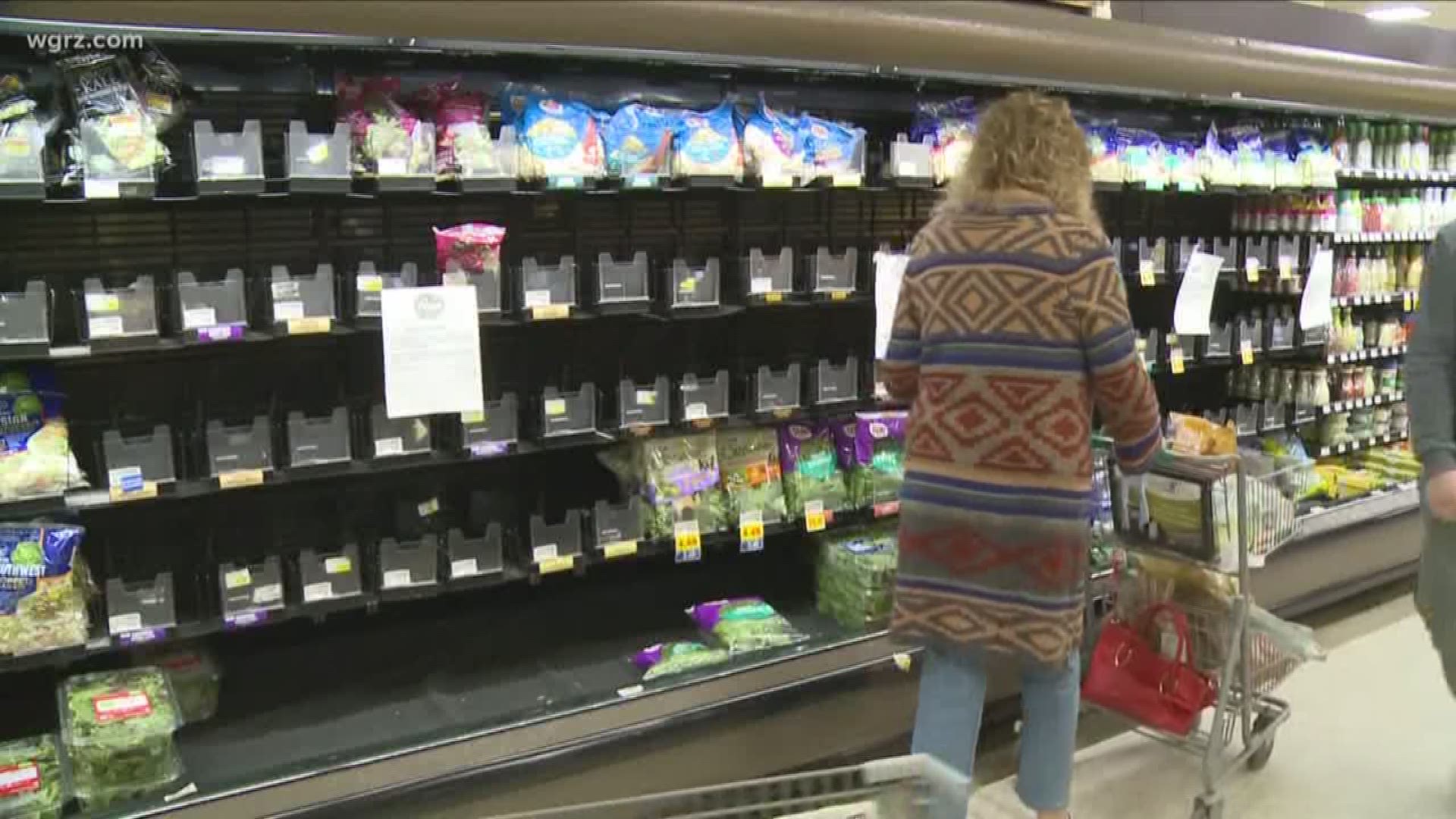BUFFALO, N.Y. — Over the past several days, 2 On Your Side has received a lot of questions about the CDC's warnings about romaine lettuce on our social media pages.
2 On Your Side's Emily Lampa reached out to the Centers for Disease Control and Prevention, as well as the Food and Drug Administration for answers to your questions.
So can't you just wash the E-Coli bacteria off the lettuce?
This 2017 study says no.
The research shows even pre-washed lettuce contains high amounts of viable bacteria.
The study also revealed that household washing with tap water without chemicals, resulted in unsafe bacteria levels - which is why experts say it's up to producers and distributors to ensure that their produce is hygienic.
Is an end to this outbreak in sight?
"I wish we knew an exact answer of when the outbreak will be over," responded Brittany Behm, Public Affairs Specialist for the CDC's Division of Foodborne, Waterborne, and Environmental Diseases. "We are still getting some cases coming in, so hopefully it will be over before too long."
Because of lettuce's relatively short shelf life, Behm tells 2 On Your Side the CDC hopes the contaminated produce will be removed from circulation quickly.
But without knowing exactly where the source of the contamination is, and stopping the outbreak there, more contaminated produce could make it's way into stores and restaurants. The CDC and the FDA currently has investigators all over the country, and in Yuma, actively looking for the source of E. Coli contamination.
If they can test a $20 bill for fraud with a pen, why can't they come up with a instant simple test to check for E. Coli?
Brittany Behm with the CDC tells us there is testing that can detect E. Coli in patient and environmental samples. They say it would be the FDA that would be able to speak on testing requirements for produce suppliers/distributors. We reached out to the FDA, and are waiting to hear what they have to say about this.
If we purchased this in the last couple of days, should we still throw it out? I was under the impression that anything still being sold after this began would be safe?
"Because it is so difficult for an individual person to know where their lettuce is coming from," explains Behm, "at this point, we would just recommend not eating any romaine lettuce...whether it's a whole head, hearts, chopped, in a salad mix...until more information is known; or until you can be sure from the store or the restaurant that they have sourced their romaine from somewhere other than Yuma, Arizona."
Why is this just affecting romaine lettuce and not the other various kinds (of produce)?
The CDC tells us investigators interviewed the people who got sick and tracked the outbreak to romaine lettuce from the Yuma, Arizona growing region.
From the CDC Website, posted April 20, 2018:
State and local health officials in Alaska interviewed ill people at a correctional facility in that state to ask about the foods they ate and other exposures before they became ill. Ill people reported eating romaine lettuce. Traceback investigations show that the lettuce ill people ate came from whole heads of romaine lettuce from the Yuma, Arizona growing region...The new Alaska cases will be included in the next case count update; they are not reflected on the epi curve and map for this posting.
E. Coli is short for Escherichia coli, which is a type of bacteria commonly found in the intestines of animals and humans. The bacteria can find it's way onto produce via animal feces in growing areas, but that has not been confirmed yet in this case. Behm tells 2 On Your Side E. Coli investigators are exploring several possibilities; including the chance that contaminated water was used to rinse the produce or that the contamination happened at a specific production facility.
How bad is the situation right now?
The CDC hasn't put out their latest numbers for this week yet. But they CDC did confirm there have been no deaths connected with the outbreak, so far.
As of last week, there were 53 cases reported across 16 states.
"This outbreak we're seeing a higher hospitalization rate than usual." notes Behm. "We're seeing about 65% of people who are sick being hospitalized, compared to about 30% of what we would expect to see."
Five of those people reported developing a type of kidney failure called hemolytic uremic syndrome.
The symptoms for this specific bacteria, E. Coli O157:H7, don't typically start until four days after eating the contaminated produce. Symptoms can include bloody diarrhea, severe cramps, and vomiting.
If you believe you may have eaten contaminated romaine, the CDC recommends you get medical attention immediately.

